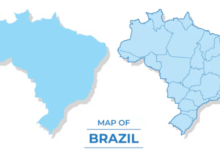Dubai Island Construction: Challenges and Innovations

Dubai is globally recognized for its architectural marvels and innovative engineering feats, none more impressive than its artificial islands. These man-made islands, such as Palm Jumeirah, The World Islands, and the new Dubai Islands, represent groundbreaking advancements in construction and urban development. However, the creation of these awe-inspiring structures is not without significant challenges. In the process of building these islands, Dubai has had to navigate complex environmental, logistical, and engineering hurdles. At the same time, the city has demonstrated remarkable innovation, employing cutting-edge technology and sustainable solutions to overcome these obstacles.
In this article, we’ll explore the key challenges faced in the construction of Dubai’s islands and the innovative approaches that have made these iconic developments possible.
1. The Environmental Challenges
One of the foremost challenges in constructing artificial islands in Dubai is the environmental impact on the Arabian Gulf’s delicate ecosystem. Creating land where there was once only water can disrupt marine habitats, affect coastal ecosystems, and alter natural water flows, leading to potential long-term environmental consequences.
During the construction of Palm Jumeirah, for example, large amounts of sand and rock were dredged from the sea to form the island. This dredging process can cause sediment plumes, which reduce water quality and affect marine life, including coral reefs and fish populations.
Innovations to Address Environmental Concerns
To mitigate these impacts, Dubai’s island projects have adopted several innovative strategies:
- Sand Recycling and Dredging Innovations: One significant innovation is the use of recycled sand and materials in island construction. For instance, instead of dredging new materials from the sea, some projects now rely on sand recycling, which reduces the environmental footprint.
- Marine Life Protection: Additionally, developers have implemented marine protection measures, such as creating artificial reefs and fish sanctuaries around the islands to preserve marine biodiversity. Palm Jumeirah, for instance, includes several reef regeneration programs to restore the underwater ecosystem that was initially disrupted during construction.
- Sustainable Designs: In newer developments like the Dubai Islands project, sustainability is at the forefront of the design. This includes building green spaces, water recycling systems, and energy-efficient structures that minimize the environmental footprint of the islands.
2. Logistical and Engineering Challenges
The construction of Dubai’s islands involves significant logistical and engineering challenges. Building on water requires innovative solutions for land reclamation, stabilization, and infrastructure development. In addition, the scale of these projects is immense, requiring vast amounts of resources, labor, and technology.
Land Reclamation and Stabilization
One of the key challenges in island construction is land reclamation, the process of creating new land by filling areas of water with sand, rock, and other materials. For Palm Jumeirah, 94 million cubic meters of sand were dredged from the sea, while 7 million tons of rock were used to form its breakwaters. The sheer volume of materials and the precision required for shaping the islands posed significant challenges.
Another critical issue is ensuring the stability of these artificial land masses. Engineers need to ensure that the islands are strong enough to support the weight of buildings, infrastructure, and residents. In the early stages of island construction, land settlement (where the land sinks or shifts) was a major concern. This was particularly challenging for The World Islands, as the individual islands are smaller and more prone to shifting.
Innovative Engineering Solutions
To overcome these challenges, Dubai employed several engineering innovations:
- Vibro-compaction: This technique, used on Palm Jumeirah, involves vibrating the sand to compact it, increasing the density of the reclaimed land and ensuring its stability. This method allowed the land to support the construction of massive hotels, residential buildings, and infrastructure.
- Geotextile Technology: In newer projects like Dubai Islands, developers have employed advanced geotextile fabrics, which are placed beneath the reclaimed sand to prevent erosion and ensure long-term stability. These fabrics act as a barrier, helping to distribute the weight of the land and structures evenly across the foundation.
- Breakwaters and Coastal Protection: Breakwaters are another essential element of island construction, designed to protect the islands from waves and prevent erosion. For Palm Jumeirah, an 11-kilometer-long crescent-shaped breakwater was constructed using millions of tons of rock to shield the island from the sea’s forces. These breakwaters were meticulously engineered to not only provide protection but also to allow water circulation, preventing stagnation around the island.
3. Infrastructure and Connectivity Challenges
Building islands is just the first step; ensuring they are livable and accessible presents another set of challenges. Providing infrastructure such as roads, utilities, water, and electricity to artificial islands requires extensive planning and engineering. Additionally, ensuring efficient transportation between the islands and the mainland is crucial for residents and tourists.
Innovative Solutions for Infrastructure and Connectivity
- Subsea Tunnels and Bridges: One of the most significant innovations in Dubai’s island developments is the use of subsea tunnels and bridges to connect the islands to the mainland. The Palm Jumeirah, for instance, is connected to the mainland via a 1.4-kilometer-long bridge. Additionally, a subsea tunnel links the trunk of the Palm to the crescent, allowing easy transportation across the island.
- Advanced Utility Systems: Dubai’s island developments have implemented state-of-the-art utility systems to provide essential services like water, electricity, and telecommunications. For example, district cooling systems have been introduced in many of the island developments to provide efficient cooling for large-scale buildings. This system uses chilled water to cool air, significantly reducing energy consumption compared to traditional air conditioning systems.
- Monorail and Sustainable Transport: The Palm Jumeirah also features a monorail system, providing a sustainable and efficient mode of transport for residents and visitors. Plans for Dubai Islands include smart transportation systems, electric vehicle charging stations, and extensive pedestrian walkways to reduce reliance on cars and promote sustainable travel.
4. Sustainability and Smart Island Technologies
With environmental concerns increasingly at the forefront of global development discussions, Dubai has embraced sustainability and smart technology in its latest island projects. The Dubai Islands development is a prime example of how the city is incorporating eco-friendly design and smart city innovations to create sustainable, future-proof communities.
Sustainability Innovations
- Green Building Standards: Developers are adopting green building standards, such as LEED (Leadership in Energy and Environmental Design), to ensure that island structures are energy-efficient and environmentally friendly.
- Solar Power and Renewable Energy: Solar panels and other renewable energy sources are being integrated into many of the island developments, reducing their reliance on non-renewable energy sources. Dubai Islands, in particular, plans to feature a network of solar-powered infrastructure.
- Smart Water Management: Water conservation and management are critical in Dubai’s island developments, with innovative systems in place for water recycling, rainwater harvesting, and efficient irrigation of green spaces.
Conclusion
The construction of Dubai’s artificial islands is a testament to the city’s ambition and engineering prowess. Despite facing significant environmental, logistical, and engineering challenges, Dubai has consistently pushed the boundaries of innovation, creating some of the world’s most luxurious and iconic developments. From advanced land reclamation techniques to sustainable and smart island technologies, Dubai’s island projects are paving the way for future urban developments around the globe. As the city continues to expand its island offerings with projects like Dubai Islands, it is clear that Dubai is setting a new standard for luxury, innovation, and sustainability in island construction.






